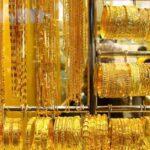✓ Just as one can see what one does not need by looking at what one needs, in the case of the policy rate, it is possible to see which rate will be useful to us and which rate will be useless…
✓ This approach seems to tell us that 40 percent would be more meaningful.
At what level will the policy rate be announced tomorrow? Will the current rate of 35 percent be raised to 37.5 percent in line with the weighted expectation, or will it be 40 percent? Or will we see a very different rate?
You know how you can see what you don’t need in a sense by looking at what you need?
Let’s do the same with interest.
Let us look at what rate we need and try to conclude which rate we should not have…
First, let’s look for an answer to this simple question:
Why is the Central Bank raising interest rates?
First, to make the Turkish currency more valuable, to tighten monetary policy through this and other supportive measures, and ultimately to fight inflation.
The second is to raise external funds by increasing the yield on the Turkish currency.
From 8.5 to 35…
The Central Bank’s policy rate was raised from 8.5 percent to 35 percent in five meetings between June and October.
Of course, just because the interest rate was raised, the positive effect is not immediate.
For example, during the period when interest rates were raised, there was very high inflation, so it was as if the interest rate hike hindered the fight against inflation, not helped it. But we know that this inflation is the residue of the past, of the pre-election period. Therefore, if the interest rate hike will have an impact, and it will, this can be expected over time.
The increase in the policy rate to 35 percent pushed up a series of interest rates such as deposit, loan and Treasury borrowing rates.
But the rate hike failed to change inflation expectations and pricing behavior.
So 35 percent is far from working yet in this sense. Therefore, from this point of view, it is much more plausible, even more reasonable and necessary for the Central Bank to raise the interest rate to 40, not 37.5, at tomorrow’s meeting.
In other words, it seems that 37.5 percent is not what we need, what will meet our needs.
This interest rate was not enough to attract foreigners
Let me reiterate that I am not referring to direct investment. Those who intend to invest directly are not really interested in the level of interest rates. Those who are going to come to Turkey and invest directly, especially those who are going to build a plant from scratch, are looking for something else.
Such as the good functioning of the law, such as the implementation of court decisions, such as the executive power not openly saying that it does not recognize court decisions…
Therefore, I am already skipping direct investment. They have not been coming to Turkey for a long time. Those who do come are included in the direct investment statistics by buying a certain percentage of shares of an established facility. Then, of course, there is the sale of real estate, which is considered direct investment.
Portfolio investment I’m talking about. That is sensitive to the level of interest rates. You know, hot money, or so called those who come for ‘hit and run’, we are even willing to accept that, but we cannot find them! Even they are not coming.
Turkey’s benchmark interest rate is around 40 percent. The Treasury also borrowed at around 40 percent interest in its last auctions. In other words, an investor can buy a borrowing paper with a nominal value of TRY 100 at a discount by paying about TRY 71 today. The TRY 29 difference in between will be the annual return.
Here, foreign investors turn their noses up at 40 percent interest rates. They want interest rates to rise even more. You know what we always say, “earn while you buy.” A borrowing paper bought today for TRY 71 at 40 percent interest will be bought for TRY 66 if the interest rate rises to, say, 50 percent tomorrow.
Wouldn’t you wait for the purchase price to fall further?
The Central Bank has to remove doubts
Even 40 percent interest is a very good rate for foreign investors. But only if the hesitation in minds can be removed…
Hesitation 1: What if interest rates increase further? In this case, the scenario I mentioned above will come true; the price of paper that is now selling for TRY 71 will fall to TRY 66, maybe even lower. No one knows to what level the interest rate will be raised or whether this is the end of the line. Every time the Central Bank says, “Monetary tightening will be implemented when and to the extent necessary”. It is an open-ended statement. When investors see the same statement every month, they inevitably think, “There may be more monetary tightening next month, in other words, interest rates may be raised, and I may be able to buy debt securities at a cheaper price,” and they prefer to wait.
Hesitation 2: The expectation that the exchange rate will increase cannot be broken. Since the priority is to earn while earning, the foreign investor, rightly from his/her point of view, is looking for an environment where he/she will receive more Turkish currency when he/she exchanges his/her foreign currency. There is always this thought in their minds:
“Instead of exchanging my foreign currency today, I should exchange it tomorrow and buy more TRY, and on top of that, since the interest rate has increased, I have the opportunity to buy cheaper paper…”
We will wait a long time for FX to come
Until these hesitations are eliminated, we will wait a long time for foreign exchange to come.
Therefore, the Central Bank needs to somehow break expectations.
It is good to say “Monetary tightening will be gradually strengthened when and to the extent necessary”, but this is also a statement that creates expectations. It is as if this statement has become increasingly harmful…








